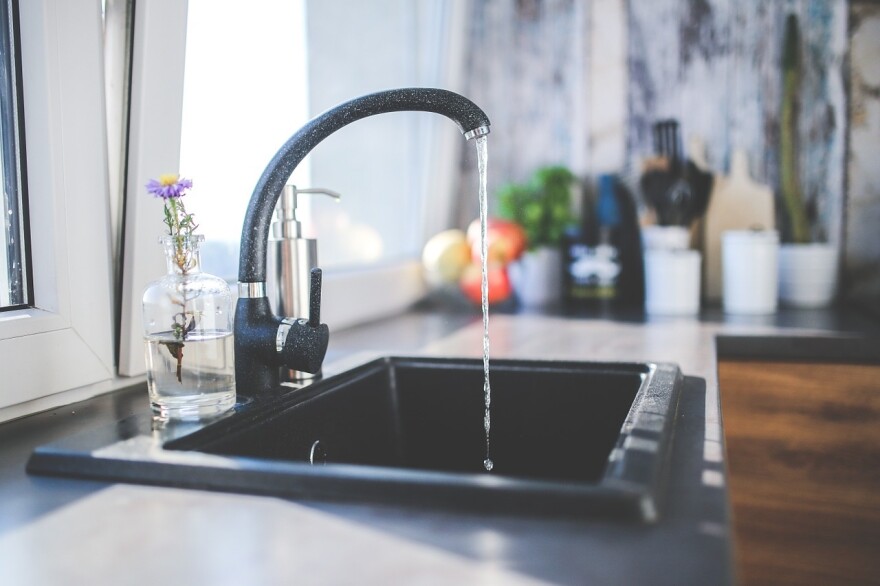A new report from the Natural Resource Defense Council suggests up to 360,000 lead pipes carry water to homes in New York.
The council said the lead problem lies in service lines, or pipes that carry water from the mains under the street to homes, and are considered the primary contributor to lead in drinking water. The national report analyzed data from 10 states, including Connecticut (43,000 lead pipes) and New Jersey (350,000 lead pipes).
“That number is statewide, certainly in the urban areas, you would expect to see more lead service lines, but it could also be an issue in rural communities as well,” said Joan Leary Matthews, a senior attorney at the council.
New York, ranked the fourth worst by the report, is among 23 states that do not gather data on the number of lead pipes statewide. The council relied on data from a 2016 American Water Association survey, administered by the U.S. Government Accountability Office, which contained “low-estimates” of lead service pipes.
However, New York Governor Andrew Cuomo signed into law in 2017 the clean water infrastructure act, which included a lead service line replacement program.
On Long Island, the Suffolk County Water Authority, which services 400,000 customers in central Suffolk, said they are not aware of any lead pipes in the territory. However, service lines are not their property.
“There are no water mains in our service territory made of lead, and lead does not naturally occur in groundwater here, so we’ve got those advantages in Suffolk County,” a water authority spokesperson said.
Joe Pokorny, the authority’s deputy CEO for operations, said water is pumped from supply wells and the risk of lead is minimal.
“Any lead that's introduced into the water is strictly through the plumbing, through the pipes, and the plumbing in people's homes,” he said.
Pokorny said most lead pipes would be found in neighborhoods developed before World War II, which is limited in central Suffolk County.
“Suffolk County is relatively new,” he said, referring to the flashpoint of suburban crawl in the 1950s. “Really, most of Suffolk County was built out after World War II and as a result, we don't know of any service lines in our territory that are made of lead at this point.”
Since 2017, several towns on Long Island were awarded money through the lead service line replacement program. In Nassau County, the city of Glen Cove and the towns of Hempstead and North Hempstead also received funds.
The Town of Southold in eastern Suffolk County received over $1.2 million. The Suffolk County Water Authority only controls 85% of the water supply in the county. Most of the money was directly allocated to the Village of Greenport, which handles its water distribution. Pokorny said he wasn’t privy to these remediation efforts outside the authority’s territory.
Also separate from the county, the town of Riverhead was given a grant of nearly $630,000 in August 2019 to replace lead lines. Dawn Thomas, the town’s community development agency director, said the pandemic caused delays in its implementation, but a contract was signed with the State Department of Health within the past few months to start the process. The town is working with engineers to determine which pipes need to be replaced.
The Suffolk County Water Authority plans to survey their pipes to ensure there is no lead because of a new federal mandate.
In 2018, Congress passed a requirement that the EPA take into account all lead pipes in the country, and estimate the cost to replace them by 2022. To do this, the EPA is required to obtain data from individual states, so grants can be distributed through the Drinking Water State Revolving Fund, which contains money set aside to improve water infrastructure.
In 2016, Cuomo mandated lead testing and remediation for drinking water in public schools and required public notification of results. This year, the Biden administration proposed $45 billion in its latest infrastructure package to eliminate lead pipes across the country.
“We have a very sophisticated GIS system that we use to map all of our water main and underground utilities," Pokorny said, comparing the system to the old paper records of when homes were built as well as data from their service work. “We are now working on revising those maps to allow us to show on the maps the type of materials that the water services are made of and that will allow our interns and our staff that are going to be going through this to look and see pictorially on a map, what materials we have, what homes we have data on, and which ones we don't. ”
Pokorny said if a home was built after 1960, it is most likely the pipes are copper.
According to the U.S. Centers of Disease Control and Prevention, there is no safe level for lead in children. Even low exposure over a relatively long period of time, lead can contribute to developmental problems, including damage to the brain nervous system, learning disabilities and shorter stature, among other ailments. Adults can suffer from cardiovascular disease and adverse impacts on reproduction and the kidneys, and other health issues when exposed.
Matthews, with the defense council, said New Yorkers concerned about lead can contact their local municipality to access their home’s building records. She also recommended people perform a “scratch test.” Take a coin or screwdriver and rub it against the point the pipe comes to their home or their water meter.
“If it turns out to be kind of shiny, then you have a lead service line or lead pipe,” she said.
She also recommended residents use a filtration system if they suspect there is lead in their home. Customers who have concerns can call the Suffolk County Water Authority, or their municipal provider, and they will provide a more elaborate water test. The authority reports their territory has not seen lead in water previously.


